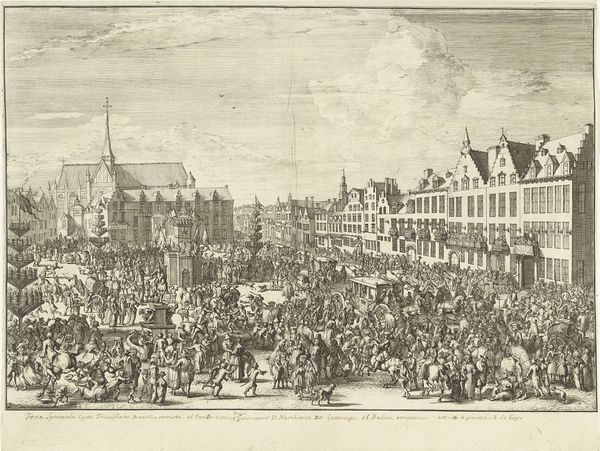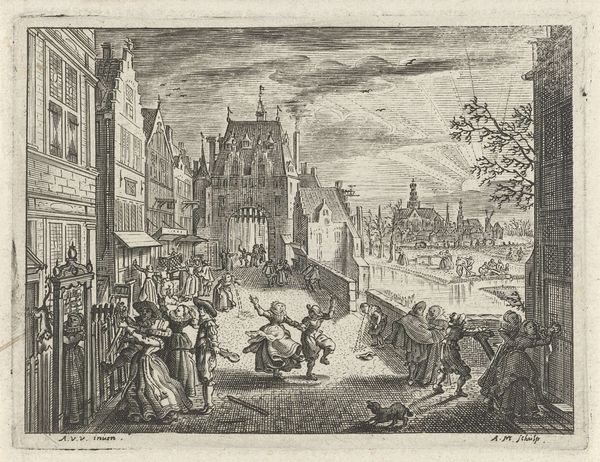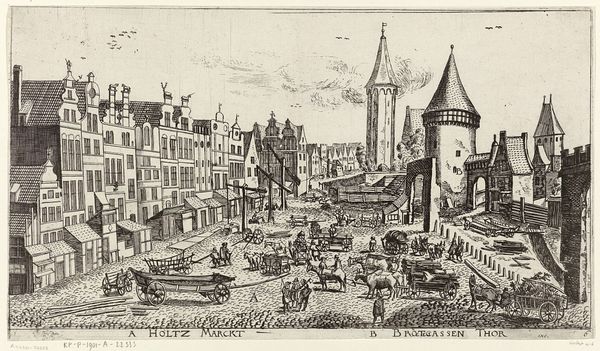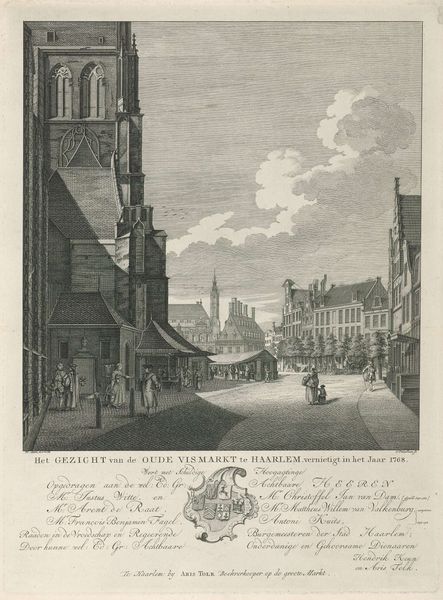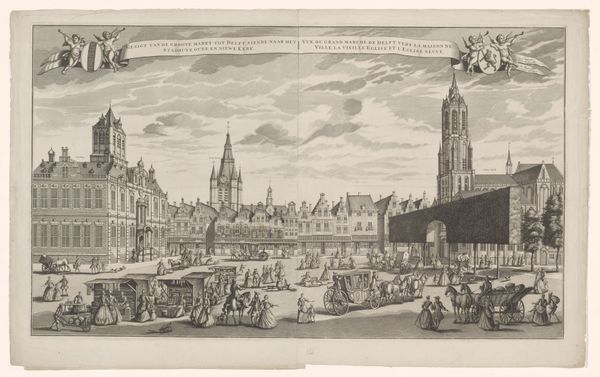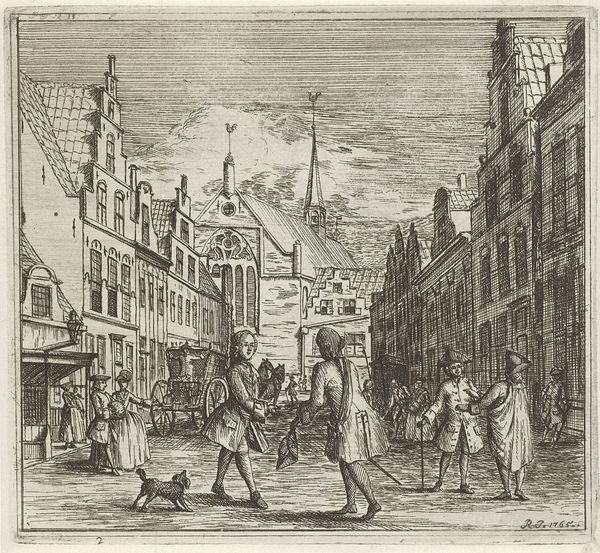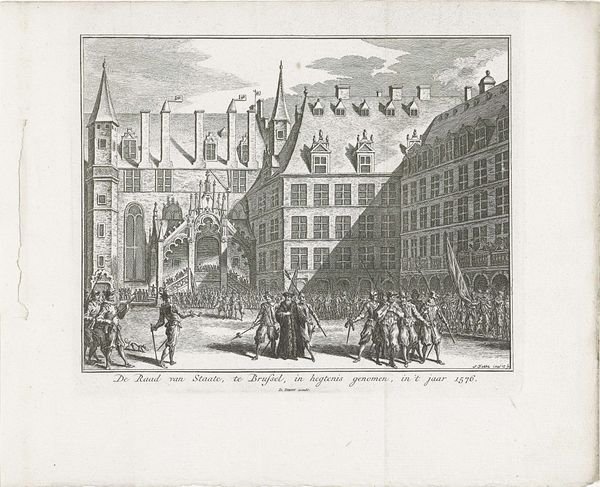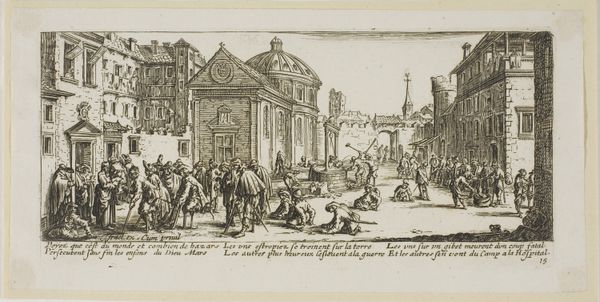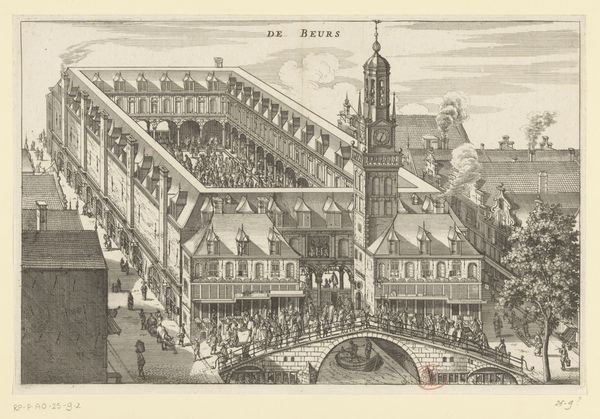
print, etching, engraving
#
baroque
#
dutch-golden-age
# print
#
etching
#
perspective
#
line
#
cityscape
#
history-painting
#
engraving
#
realism
Dimensions: height 271 mm, width 198 mm
Copyright: Rijks Museum: Open Domain
Curator: This engraving from 1639 depicts "The Arrival of Maria de' Medici in Leiden." I am intrigued by the intense labor and detailed material process that went into this kind of visual propaganda. What strikes you first? Editor: Well, the cityscape is very detailed. I can make out so many figures, buildings and architectural details, boats on the canal; the artist did a very nice job creating a full-bodied impression with a seemingly simple material, this etching on paper. How was it done? Curator: Exactly! The materiality is crucial. Consider the skilled hand needed to incise those lines into the metal plate, the precision and control required. Each line represents hours of labor, replicating the image for mass consumption. It speaks volumes about the Dutch Golden Age’s commercial market and production practices. The art object becomes a product, available and affordable for broader consumption, how would that be understood in social terms? Editor: That's fascinating. It means images weren't just for the elite, it suggests there was a middle class audience. It makes me think of print shops, and the smell of ink, and of how these images spread news and ideas much faster. What do you make of the image showing Maria de Medici? It's not immediately obvious. Curator: Good eye. Instead of a glorious portrait, we see her arrival reduced to a small component, nearly engulfed by the urban fabric and the throngs of people. The process shifts away from an almost "divine" appointment of leaders and focuses, in material terms, on a spectacle staged for a particular socio-economic moment. Consider also the accessibility granted to ordinary viewers to evaluate, negotiate, and perhaps even dispute this "royal" entrance as reproduced on the physical material. Editor: So, the very material challenges a hierarchy that might be central to the event being represented? Curator: Precisely! Instead of reinforcing Maria's authority, this affordable artwork, crafted through painstaking manual labor, democratizes her image, enabling broader consumption and potentially even questioning the social order. Editor: I hadn't considered how the actual making of the artwork could influence its meaning. That really makes me see it differently. Curator: Indeed. Analyzing art through material processes unearths intriguing new paths for examining art!
Comments
No comments
Be the first to comment and join the conversation on the ultimate creative platform.

